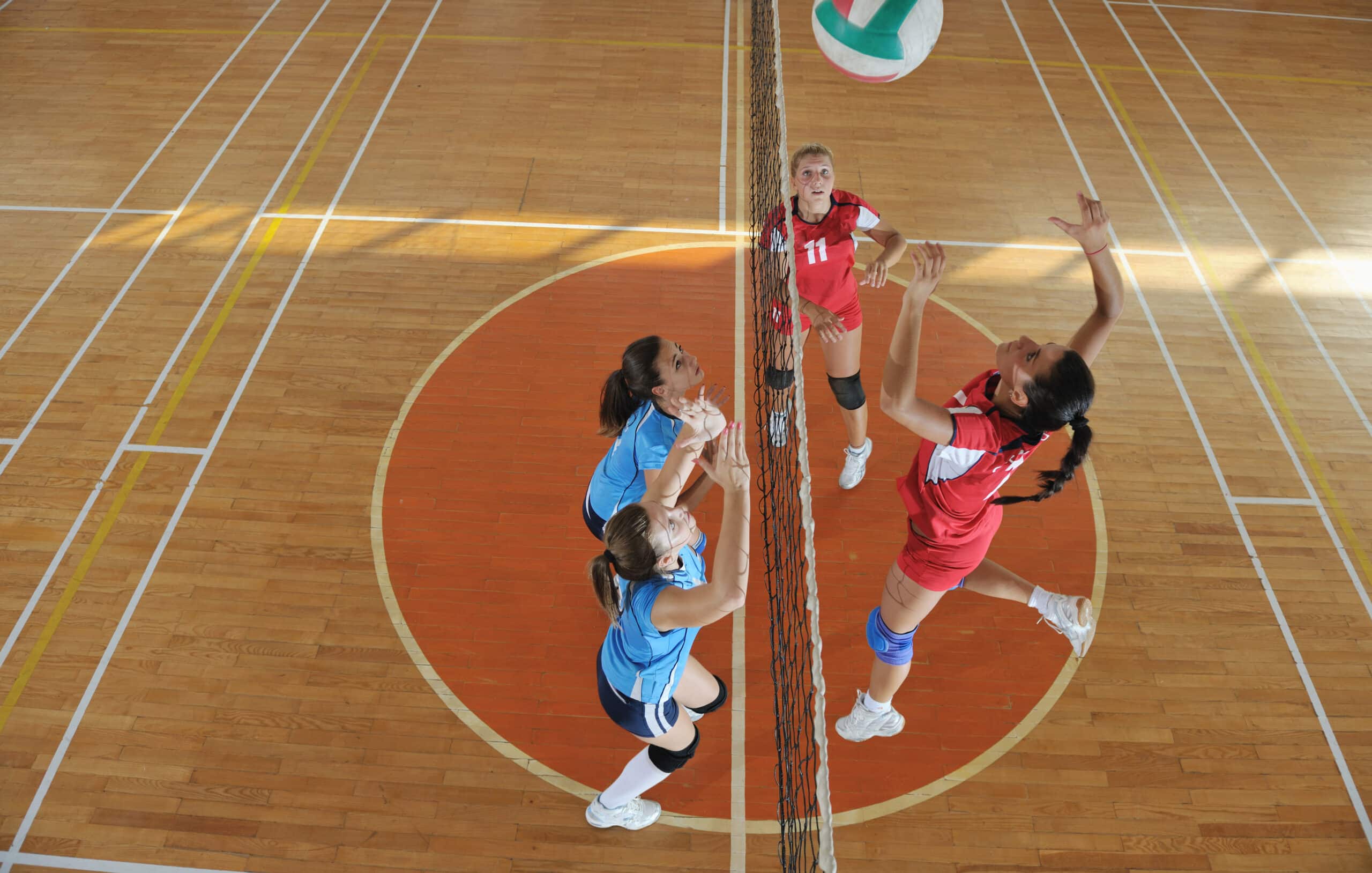Can you explain the difference between indoor and beach volleyball?
Key Takeaways
- The playing surface for indoor volleyball is a hard court, while beach volleyball is played on sand.
- The court size for indoor volleyball is larger than that of beach volleyball.
- The rules and strategies differ between indoor and beach volleyball, including variations in line width, net dimensions, and ball handling.
Indoor and beach volleyball are two popular variations of the sport that differ in several ways. The playing surface, court size, rules, and strategies all vary between the two. In this article, we will explore these differences and provide a comprehensive understanding of indoor and beach volleyball.
Playing Surface and Court Size
The most apparent difference between indoor and beach volleyball lies in the playing surface. Indoor volleyball is typically played on a hard court, whereas beach volleyball is played on sand. The hard court allows for quicker movements and more controlled passing and hitting in indoor volleyball. On the other hand, the sand surface in beach volleyball requires more athleticism and improvisation due to the uneven terrain.
In terms of court size, indoor volleyball has a larger court compared to beach volleyball. The indoor court measures 18 x 9 meters, while the beach court measures 16 x 8 meters. This difference in court size affects the players’ movement and positioning on the court. The larger playing area in beach volleyball means that players have to cover a larger area of the court.
Rules and Strategies
The differences in court size and playing surface impact the rules and strategies in indoor and beach volleyball. Let’s take a closer look at these differences:
Lines on the Court
The width of the lines differs between indoor and beach volleyball. Indoor lines are 5cm wide, while beach volleyball lines can be up to 8cm wide. This variation in line width affects the players’ judgment of whether the ball is in or out.
Net
The height and width of the net may also vary between indoor and beach volleyball. Additionally, the net post placement differs between the two variations. These differences impact the players’ blocking and hitting strategies.
Ball Handling
Another significant difference is how a block is counted as a contact in beach volleyball, whereas in indoor volleyball, it does not. This distinction affects the number of touches a team has to get the ball back over the net.
Uniforms
The uniforms for beach and indoor volleyball also differ due to the different playing environments. The beach volleyball players typically wear swimsuits, while indoor volleyball players wear more traditional athletic uniforms. These differences in uniforms can affect the players’ comfort and mobility on the court.
Skills and Strategies
While many skills are transferable between indoor and beach volleyball, there are some variations in the importance of certain skills:
In indoor volleyball, the hard court allows for more controlled passing and hitting, making accuracy and power crucial. The larger court size also requires players to cover a larger area, emphasizing agility and quick movements.
On the other hand, beach volleyball’s sand surface necessitates more athleticism and adaptability. The uneven terrain challenges players to adjust their movements and make split-second decisions. In beach volleyball, players need to be proficient in all aspects of the game, as there are only two players per side. Setting, in particular, is a specific skill that is more important in beach volleyball compared to indoor volleyball.
Conclusion
In summary, indoor and beach volleyball differ in terms of playing surface, court size, rules, and strategies. The hard court in indoor volleyball allows for quicker movements and more controlled passing and hitting, while the sand surface in beach volleyball requires athleticism and adaptability. The larger court size in indoor volleyball emphasizes agility, while the beach court’s larger playing area requires players to cover more ground. Understanding these differences is crucial for players, coaches, and fans of both variations of the sport.
Related Websites:
FAQs:
Q: What are the key differences between indoor and beach volleyball?
The key differences between indoor and beach volleyball include the playing surface, footwear, game pace and strategy, and the ball used. Indoor volleyball is played on a hard court surface with athletic shoes, emphasizing quick reflexes and a faster pace. Beach volleyball, on the other hand, is played on natural sand with a preference for barefoot or sand-specific footwear, and it has a slower pace with more strategic elements involved. The balls used in each version also differ.
Q: What are the similarities between indoor and beach volleyball?
There are several similarities between indoor and beach volleyball. Both versions share the general objective of scoring points, and they use rally scoring where points are awarded on every play. The techniques and skills required, such as serving, bumping, and spiking, are similar in both types of volleyball. The fundamentals of the game remain consistent across the indoor and beach variations.
Q: How is indoor volleyball played?
Indoor volleyball is played on a hard court surface with six players on each team. The objective is to score points by hitting the ball over the net and landing it in the opposing team’s court. Teams can use a combination of serving, bumping, setting, and spiking techniques to achieve this. The game follows specific rules and regulations.
Q: How is beach volleyball played?
Beach volleyball is played on natural sand with two players on each team. The objective remains the same, which is to score points by hitting the ball over the net and landing it in the opposing team’s court. The game has a more relaxed and casual atmosphere compared to indoor volleyball, with players often using barefoot or sand-specific footwear.
Q: What are the benefits of playing volleyball in any setting?
Playing volleyball, regardless of the setting, offers numerous benefits. It is a great way to improve physical fitness, coordination, and reflexes. Volleyball also promotes teamwork, communication, and strategic thinking. Additionally, it can be a fun and social activity that helps reduce stress and enhance overall well-being.






